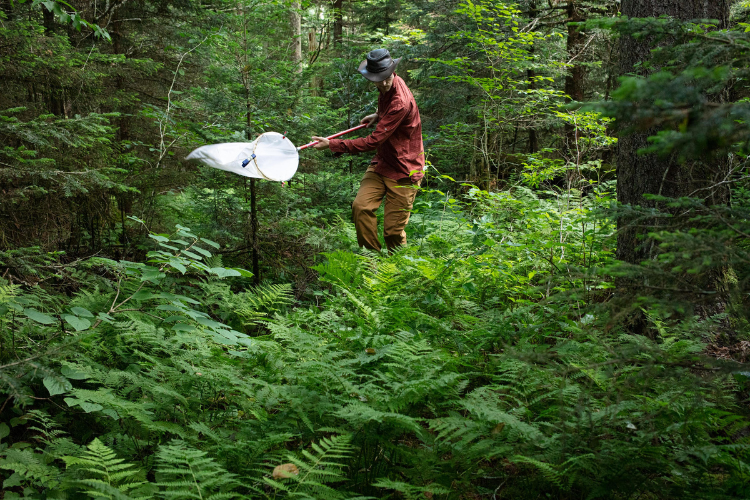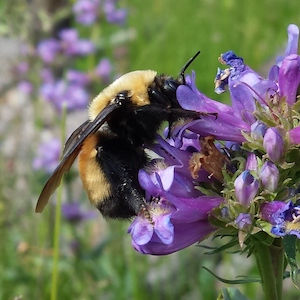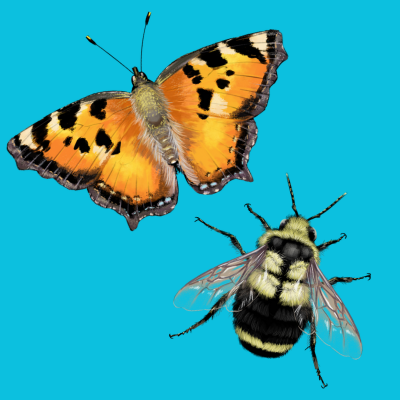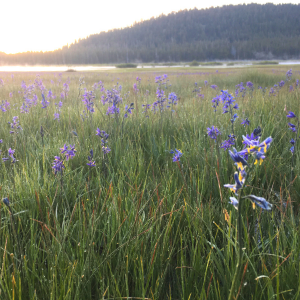Back in March, IBP welcomed a new postdoctoral researcher to the team- Dr. Graham Montgomery. But Graham is not new to IBP! He worked for 4 summers on our backcountry bird monitoring crews in the Pacific Northwest and the Sierra Nevada National Parks. He then went on to earn a Ph.D. in Ecology and Evolutionary Biology from UCLA in 2025, where his research included work on bird-insect resurveys and insect population monitoring, declines, and variability.
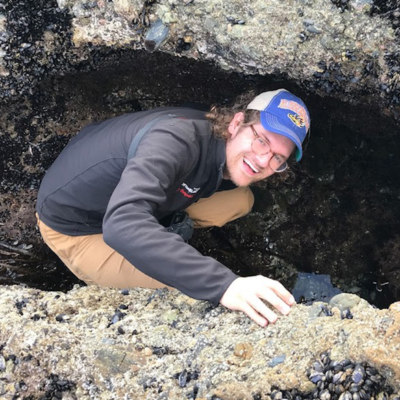
Graham tide pooling- one of his favorite activities.
Now he’ll be working with IBP for a 15-month term alongside IBP biologist and Sierra meadow specialist Helen Loffland. Graham also recently co-authored a new paper entitled “Biomass and abundance trends diverge as the North American avifauna undergoes widespread demographic declines” in the journal Oikos alongside Dr. Benjamin Tonelli and IBP alumna Joanna Wu both of UCLA. We interviewed Graham to get to know him a bit better and learn more about the new paper.
Your undergraduate degree was in entomology, but many of your field biology jobs- like your summers with IBP- focused on birds and your graduate work combined work on both insects and birds. Which came first, your interest in insects or birds?
Birds came first (by a small margin)! My interest in both was mostly inspired by my grandmother, who was a gardener and birder, and went back to school later in life for a degree in biology. She would even hold “science camps” for my cousins and I (as well as neighborhood kids).
Do you have a favorite bird?
Common Nighthawk - I love the sounds they make (peents and booms). And they seem like they’re having fun up there as they acrobatically catch bugs.
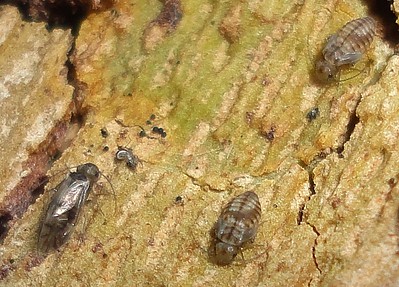
Psocoptera or "barklice." Photo by Mick Talbot.
How about a favorite insect?
I do love bumble bees, especially since starting field work earlier this summer. Overall, my favorite group has to be barklice (aka “Psocoptera”). They are gentle creatures, peacefully grazing on microalgae and lichen on tree branches. Despite being diverse and abundant, only a few people study them. Which means there is a lot still to discover about them.
Can you tell us a bit about the project you are working on for IBP?
Some bumble bee species are not doing well, and mountain meadows are like oases, full of the flowers they need to survive (at least when the meadows are healthy). I am currently working on a project investigating floral preferences and population dynamics of bumble bees in meadows in the Sierra Nevada, so we can better understand how to conserve the bumbles as degraded meadows are restored (check out the great work of the Sierra Meadows Partnership), and for revegetation in the region generally. IBP has been collecting bumble bee data for this project in Sierra meadows for several years (under the direction of Helen Loffland, Erin Elsey, and others), and now we are putting it all together.
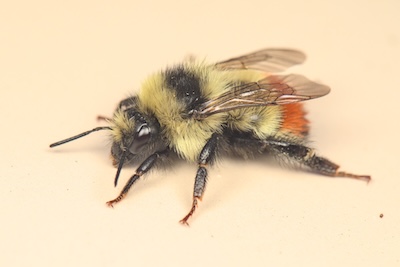
Bombus centralis, one of the bumble bee species found in the Sierra Nevada. Photo by Graham Montgomery.
The paper you co-authored in Oikos builds on the 2019 paper in the journal Science entitled “Decline of the North American avifauna” by Rosenberg et al., which found a decline of three billion birds (29%) from 1970 to 2017. You and your co-authors take the data from that study and add in the mass of the species, to give an estimate of changes in biomass of different species. Why is considering biomass worthwhile?
I think the main point of our paper is that, in addition to population size (which is more commonly measured in ornithology), biomass is an underrated metric that can tell us about how energy flows through an ecosystem. And if we explicitly measure biomass, it can help us get a sense of the scale of the changes going on. For example, the population increase of Wild Turkey in recent decades is impressive alone in terms of number of individuals, but considering their current total biomass — bigger than entire guilds of smaller species — emphasizes how profoundly they must be impacting energy flow in the ecosystems they live in.
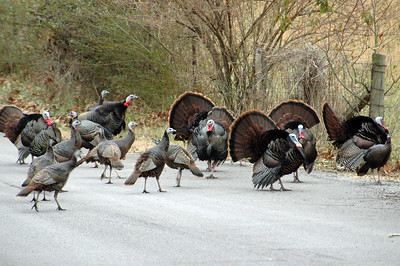
A flock of Wild Turkeys in Tennessee. Photo by Maureen/Flickr.
Another main finding is that total bird biomass actually increased between 1970 and 2017, despite the loss of 3 billion individuals! At first glance, this might suggest “birds are doing fine,” which is, of course, not true in terms of abundance. The main thing we think it demonstrates is how biomass and abundance are quite different metrics, despite often being correlated.
Why do you think biomass is rarely measured in ornithology these days?
Biomass is more often considered in almost all other taxa - plants, fish, mammals, bugs, etc. Ironically, I think part of the reason is that we know so much about birds relative to other groups! Because of that, we are able to focus on individual populations and species for conservation, and this is of course, a good thing. But I think stepping back and taking a more energetic perspective on how guilds of bird species affect their ecosystems can be interesting and informative.
You and your co-authors found declines in biomass of Herring Gulls, Dark-eyed Juncos, and Common Grackles? That's a pretty interesting and counterintuitive result!
Right - and this is what Rosenberg et al found in the 2019 study, too. It seems to be part of a pattern people are seeing more and more, where common, widespread species are showing big declines (not just rare species). If we care about conserving bird biomass and abundance, and the ecosystem services they provide, maybe we should put more effort into conserving common species, in addition to rare species. With the acknowledgement of course, that conservation funds are all too limited, so that isn’t always possible.
We are very excited to have Graham back at IBP in a new role, and we can’t wait to see what comes of his work on Sierra Nevada bumble bees. Welcome back Graham!


